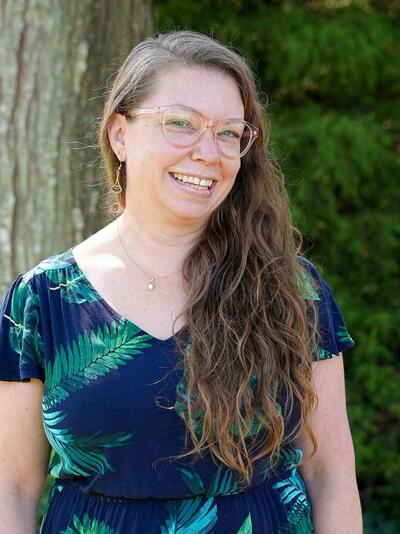
I’m grateful to call McDaniel my home. I teach animal anatomy and physiology, focusing on how structure affects function. I learned anatomy in a human cadaver lab, prioritize dissection skills, and use MCAT practice questions on exams because the concepts are the same between humans and animals.
Students in my research lab ask questions about fish’s functional morphology using high-speed video to quantify movements, histological techniques (like in a pathology lab) to examine tissues, and gross dissections to understand how the complicated parts work as functional units.
Why fish? Our research is centered on bones, cartilage, and joints, and fish have more of all of these! During suction feeding, fish heads work like a turkey baster, with moveable bones expanding the head to draw the water (and hopefully food) into the mouth. How do fish do this? What types of tissues allow for this? Students present their Capstone research at national conferences.
As a first-generation college student who grew up in nearby York, PA, I can relate to the challenges of adjusting to life on campus. I prioritize training students HOW (not just WHAT) to learn with the hope that they leave the Hill destined for a lifetime of learning.
Education
- 2011
- Ph.D., The George Washington University
- 2003
- B.S. in Biology, Mount Saint Mary's College
Research Interests
|
Recent Courses
|
Selected Publications
|
Clubs and community involvement
|
Awards and Honors
|

"Be curious. Share joy."